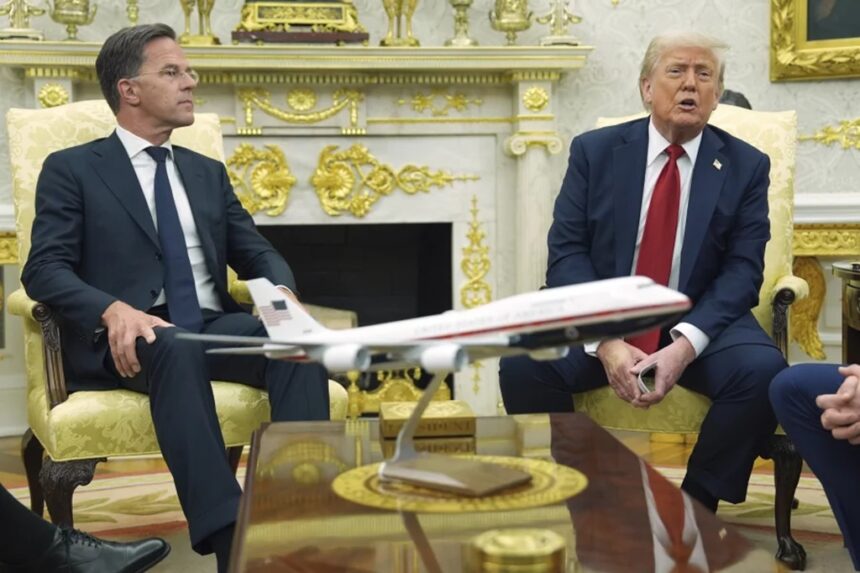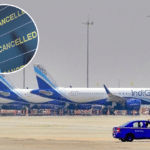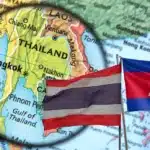WASHINGTON, D.C. – President Donald Trump rolled out a tough new policy on Monday as the war in Ukraine drags into its fourth year. Speaking from the White House after meeting with NATO Secretary-General Mark Rutte, Trump outlined plans for strict 100% tariffs on countries trading with Russia, and announced a major arms sale to NATO countries meant to boost Ukraine’s military.
This move shows Trump’s growing impatience with Russian President Vladimir Putin, who has refused to agree to a ceasefire. The new stance reflects a clear turn in U.S. policy, as Russian forces continue their attacks and Putin faces more pushback at home.
From the Oval Office, Trump aired his frustration with Putin. He said he often feels hopeful after their calls, only to see more missiles hit Kyiv or other cities, adding, “After it happens a few times, you realise the talks don’t mean much.”
Earlier in his presidency, Trump often tried to keep friendly ties with Putin. Now, analysts believe Trump has lost faith in Putin’s promises, especially after Russia’s latest strikes on Ukrainian civilians, including a deadly attack on a Kharkiv hospital.
Trump’s updated plan relies on both economic and military pressure. He promised steep tariffs of up to 100% on any country still doing business with Russia if Moscow doesn’t start ceasefire talks with Ukraine within 50 days.
This would hit major economies like China, India, Brazil, and Türkiye, all of which buy large amounts of Russian oil and gas. “I use trade for a lot of things,” Trump said. “And nothing works better to stop wars.”
At the same time, Trump revealed a deal for billions of dollars’ worth of U.S. weapons, including Patriot air defence systems, to be sold to NATO members. These allies would then send the equipment to Ukraine.
Trump called it a win for America, since NATO would cover the bill, and said the shipments would give Ukraine better tools to stop Russian attacks. Secretary-General Rutte welcomed the plan, saying it would give Ukraine the help it needs, while also matching Trump’s push for increased European defence spending.
Putin’s Promises Fall Flat
Trump’s hardening position comes after several attempts to get Putin to the table. Trump said he expected a ceasefire deal two months ago, but accused Putin of lying. His frustration grew after a recent call with Putin was quickly followed by heavy bombardment of Kyiv.
Trump’s advisors say he is angry about Putin’s lack of progress, a feeling shared by former Ukrainian Prime Minister Arseniy Yatsenyuk, who told Sky News he believes Trump now sees Putin as untrustworthy.
Trump now speaks about Putin in blunt terms, calling him “a tough guy” who “fooled a lot of people, but not me.” This marks a clear change from Trump’s earlier stance, when he often questioned U.S. aid to Ukraine and avoided criticising Putin directly.
After fresh Russian attacks and increasing pressure from NATO and political allies like Senator Lindsey Graham, Trump has shifted course. Graham said on CBS’s Face the Nation that he expects a surge in weapons shipments to Ukraine in the coming days.
Mounting Pressure Inside Russia
While Trump’s plan is meant to isolate Russia, Putin faces new troubles at home. Russia’s economy relies heavily on oil and gas, which make up a big share of its revenue and exports. Secondary tariffs could put extra strain on an already stressed economy.
Countries like China and India have found ways around earlier sanctions, though, so enforcing new tariffs won’t be easy. The Moscow Stock Exchange jumped 2.7% on Monday, suggesting investors don’t expect immediate fallout, but experts warn that sustained pressure could hurt Russia in the long run.
Public anger is also rising in Russia. The war has led to hundreds of thousands of casualties and an economy stuck in low gear. Small protests in Moscow show growing discontent as military drafts pick up.
Senior Russian politician Konstantin Kosachev shrugged off Trump’s threats, arguing the U.S. only wants to profit from weapons sales. Kremlin spokesman Dmitry Peskov called Trump’s arms plan a continuation of U.S. policy and played down its impact, but he also signalled that Moscow is being careful with Trump.
Cautious Hope in Ukraine
Ukrainian President Volodymyr Zelenskyy welcomed the news, sharing details of a “productive” chat with Trump’s special envoy, Keith Kellogg, about stronger air defences and joint weapons production.
Zelenskyy posted that Ukraine needs U.S. leadership, since “Moscow will only stop if forced to.” Still, Ukrainian officials remain cautious, remembering when Trump paused direct military aid and pushed Ukraine to consider giving up territory and dropping plans to join NATO.
The new arms package, which includes Patriot missiles and other advanced equipment, is seen as vital for Ukrainian forces. Germany has agreed to pay for two Patriot systems, Norway for one, and more European countries are expected to help.
Under the deal, NATO allies will hand over some of their current weapons to Ukraine and refill their stockpiles with new U.S.-made gear. Secretary of State Marco Rubio said this process will get arms to Ukraine faster than shipping directly from U.S. factories.
Trump’s approach frames the arms deal as a straight business transaction. According to Professor Michael Clarke, an analyst for Sky News, Trump wants to assure his supporters that America will profit.
This message is aimed at his “America First” base, including those like Representative Marjorie Taylor Greene who think the plan breaks Trump’s pledge to limit overseas involvement.
Some critics say Trump’s focus on money could distract from the real goal of helping Ukraine. Sam Kiley, world affairs editor at The Independent, wrote that the arms deal might be more about boosting U.S. sales than defending Kyiv. Kiley also pointed out there’s no certainty Trump will keep sending weapons if Putin agrees to talks, given Trump’s earlier freeze on U.S. intelligence support for Ukraine.
Trump’s Ultimatum
Trump’s ultimatum puts countries like China and India in a tough spot. India, now the biggest buyer of Russian oil shipped by sea, would face major problems if tariffs are enforced. China is also exposed, but its history of skirting U.S. sanctions means any new measures will be hard to police.
For NATO, the new weapons deal underlines its role in supporting Ukraine and answers Trump’s call for higher European defence funding. At the most recent summit, NATO members agreed to raise defence spending to 5% of GDP by 2035, which matches Trump’s demands. Still, the alliance faces practical hurdles in moving weapons quickly and keeping up with Trump’s changing policy.
The world now eyes the 50-day window to see if Trump’s threats will push Putin to negotiate or raise the stakes. Ukraine will get a much-needed flow of arms, but ongoing U.S. support is not guaranteed. Putin, on the other hand, faces deeper economic and political problems at home. Trump’s gamble is clear: his deal-making style could either bring an end to the war or add to global tension.
As Secretary-General Rutte put it, “If I were Vladimir Putin, I’d think hard about getting serious with talks on Ukraine.” For now, the countdown has started.














